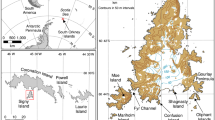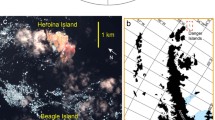Abstract
Protected area managers need reliable information to detect spatial and temporal trends of the species they intend to protect. This information is crucial for population monitoring, understanding ecological processes, and evaluating the effectiveness of management and conservation policies. In under-funded protected areas, managers often prioritize ungulates and carnivores for monitoring given their socio-economic value and sensitivity to human disturbance. Aircraft-based surveys are typically utilized for monitoring ungulates because they can cover large areas regardless of the terrain, but such work is expensive and subject to bias. Recently, unmanned aerial vehicles have shown great promise for ungulate monitoring, but these technologies are not yet widely available and are subject to many of the same analytical challenges associated with traditional aircraft-based surveys. Here, we explore use of inexpensive and robust distance sampling methods in Kafue National Park (KNP) (22,400 km2), carried out by government-employed game scouts. Ground-based surveys spanning 101, 5-km transects resulted in 369 ungulate group detections from 20 species. Using generalized linear models and distance sampling, we determined the environmental and anthropogenic variables influencing ungulate species richness, density, and distribution. Species richness was positively associated with permanent water and percent cover of closed woodland vegetation. Distance to permanent water had the strongest overall effect on ungulate densities, but the magnitude and direction of this effect varied by species. This ground-based approach provided a more cost-effective, unbiased, and repeatable method than aerial surveys in KNP, and could be widely implemented by local personnel across under-funded protected areas in Africa.





Similar content being viewed by others
References
Anderson K, Gaston KJ (2013) Lightweight unmanned aerial vehicles will revolutionize spatial ecology. Front Ecol Environ 11:138–146
Becker M, McRobb R, Watson F et al (2013) Evaluating wire-snare poaching trends and the impacts of by-catch on elephants and large carnivores. Biol Conserv 158:26–36
Beyer HL (2015) Geospatial modelling environment (Version 0.7.4.0). http://www.spatialecology.com/gme
Borg BL, Arthur SM, Bromen NA et al (2016) Implications of harvest on the boundaries of protected areas for large carnivore viewing opportunities. PLoS ONE 11:e0153808
Brashares JS, Golden CD, Weinbaum KZ et al (2011) Economic and geographic drivers of wildlife consumption in rural Africa. PNAS 108:13931–13936
Buckland ST (2001) Introduction to distance sampling: estimating abundance of biological populations. Oxford University Press, Oxford
Buckland ST, Anderson DR, Burnham KP et al (2007) Advanced distance sampling. Oxford University Press, Oxford
Burnham KP, Anderson DR (2002) Model selection and multimodel inference: a practical information-theoretic approach. Springer, New York
Campbell K, Borner M (1995) Population trends and distribution of Serengeti herbivores: implications for management. In: Sinclair ARE, Arcese P (eds) Serengeti II: dynamics, management, and conservation of an ecosystem. University of Chicago Press, Chicago
Caughley G (1974) Bias in aerial survey. J Wildl Manag 38:921–933
Chandler RB, Royle JA, King DI (2011) Inference about density and temporary emigration in unmarked populations. Ecology 92:1429–1435
Craigie ID, Baillie JEM, Balmford A et al (2010) Large mammal population declines in Africa’s protected areas. Biol Conserv 143:2221–2228
Creel S, Creel NM (2002) The African wild dog: behavior, ecology and conservation. Princeton University Press, Princeton
Creel S, M’soka J, Dröge E et al (2016) Assessing the sustainability of African lion trophy hunting, with recommendations for policy. Ecol Appl 26:2347–2357
Danielsen F, Burgess ND, Balmford A (2005) Monitoring matters: examining the potential of locally-based approaches. Biodivers Conserv 14:2507–2542
Danielsen F, Burgess ND, Balmford A et al (2009) Local participation in natural resource monitoring: a characterization of approaches. Conserv Biol 23:31–42
Dröge E, Creel S, Becker MS, M’soka J (2017) Spatial and temporal avoidance of risk within a large carnivore guild. Ecol Evol 7:189–199
Estes R (1991) The behavior guide to African mammals. Russell Friedman Books, Sunvalley
Estes JA, Terborgh J, Brashares JS et al (2011) Trophic downgrading of planet earth. Science 333:301–306
Fiske IJ, Chandler RB (2011) Unmarked: an R package for fitting hierarchical models of wildlife occurrence and abundance. J Stat Softw 43:1–23
Frederick H (2011) Aerial survey: Kafue ecosystem 2011. Zambia Wildlife Authority, Chilanga
Geldmann J, Barnes M, Coad L et al (2013) Effectiveness of terrestrial protected areas in reducing habitat loss and population declines. Biol Conserv 161:230–238
Griffin PC, Lubow BC, Jenkins KJ et al (2013) A hybrid double-observer sightability model for aerial surveys. J Wildl Manag 77:1532–1544
Grimsdell JJR, Bell RHV (1972) Population growth of red lechwe, Kobus leche leche Gray, in the Busanga Plain, Zambia. Afr J Ecol 10:117–122
Gros PM, Kelly MJ, Caro TM (1996) Estimating carnivore densities for conservation purposes: indirect methods compared to baseline demographic data. Oikos 77:197–206
Hayward MW, O’Brien J, Hofmeyr M, Kerley GIH (2006) Prey Preferences of the African wild dog Lycaon pictus (Canidae: Carnivora): ecological requirements for conservation. J Mamm 87:1122–1131
Hayward MW, Boitani L, Burrows ND et al (2015) Forum: ecologists need robust survey designs, sampling and analytical methods. J Appl Ecol 52:286–290
Henson DW, Malpas RC, D’Udine FAC (2016) Wildlife law enforcement in sub-Saharan African protected areas —a review of best practices. IUCN, Cambridge, UK and Gland, Switzerland
IUCN and World Commission on Protected Areas (2016) IUCN green list of protected and conserved areas: standard. IUCN, Gland
Jachmann H (2001) Estimating abundance of African wildlife: an aid to adaptive management. Kluwer Academic Publishers, Norwell
Jachmann H (2002) Comparison of aerial counts with ground counts for large African herbivores. J Appl Ecol 39:841–852
Jolly GM (1969) Sampling methods for aerial censuses of wildlife populations. East Afr Agric For J 34:46–49
Kahler JS, Roloff GJ, Gore ML (2013) Poaching risks in community-based natural resource management. Conserv Biol 27:177–186
Kéry M, Royle JA, Schmid H (2005) Modeling avian abundance from replicated counts using binomial mixture models. Ecol Appl 15:1450–1461
Koh LP, Wich SA (2012) Dawn of drone ecology: low-cost autonomous aerial vehicles for conservation. Trop Conserv Sci 5:121–132
Krüger O (2005) The role of ecotourism in conservation: panacea or Pandora’s box? Biodivers Conserv 14:579–600
Linchant J, Lisein J, Semeki J et al (2015) Are unmanned aircraft systems (UASs) the future of wildlife monitoring? A review of accomplishments and challenges. Mamm Rev 45:239–252
Lindsey PA, Frank LG, Alexander R et al (2007) Trophy hunting and conservation in Africa: problems and one potential solution. Conserv Biol 21:880–883
Lindsey PA, Nyirenda V, Barnes J et al (2014) Underperformance of African protected area networks and the case for new conservation models: Insights from Zambia. PLoS ONE 9:e94109
Linkie M, Martyr DJ, Harihar A et al (2015) Safeguarding Sumatran tigers: evaluating effectiveness of law enforcement patrols and local informant networks. J Appl Ecol 52:851–860
Litoroh M, Omondi P, Kock R, Amin R (2012) Conservation and management strategy for the elephant in Kenya. Kenya Wildlife Service, Nairobi
M’soka J, Creel S, Becker M, Murdoch J (2017) Ecological and anthropogenic effects on the density of migratory and resident ungulates in a human-inhabited protected area. Afr J Ecol 55:618–631
Marsh H, Sinclair DF (1989) Correcting for visibility bias in strip transect aerial surveys of aquatic fauna. J Wildl Manag 53:1017–1024
Mazerolle MJ (2016) AICcmodavg: model selection and multimodel inference based on (Q) AIC (c)[Software]
Midlane N, O’Riain MJ, Balme GA et al (2014) On tracks: a spoor-based occupancy survey of lion Panthera leo distribution in Kafue National Park, Zambia. Biol Conserv 172:101–108
O’Shaughnessy R, Cain JW, Owen-Smith N (2014) Comparative diet and habitat selection of puku and lechwe in northern Botswana. J Mamm 95:933–942
Ogada MO, Woodroffe R, Oguge NO, Frank LG (2003) Limiting depredation by African carnivores: the role of livestock husbandry. Conserv Biol 17:1521–1530
Ogutu JO, Owen-Smith N (2003) ENSO, rainfall and temperature influences on extreme population declines among African savanna ungulates. Ecol Lett 6:412–419
Ogutu JO, Reid RS, Piepho H-P et al (2014) Large herbivore responses to surface water and land use in an East African savanna: implications for conservation and human-wildlife conflicts. Biodivers Conserv 23:573–596
Prins HHT (2000) Competition between wildlife and livestock in Africa. In: Prins HHT, Grootenhuis JG, Dolan TT (eds) Wildlife conservation by sustainable use. Springer, Dordrecht, pp 51–80
R Core Team (2016) R: A language and environment for statistical computing. R Foundation for Statistical Computing, Vienna
Ransom JI, Kaczensky P, Lubow BC et al (2012) A collaborative approach for estimating terrestrial wildlife abundance. Biol Conserv 153:219–226
Republic of Zambia (2011) 2010 census of population and housing. Central Statistical Office, Lusaka
Ripple WJ, Estes JA, Beschta RL et al (2014) Status and ecological effects of the world’s largest carnivores. Science 343:1241484
Ripple WJ, Newsome TM, Wolf C et al (2015) Collapse of the world’s largest herbivores. Sci Adv 1:e1400103
Rosenblatt E, Becker MS, Creel S et al (2014) Detecting declines of apex carnivores and evaluating their causes: an example with Zambian lions. Biol Conserv 180:176–186
Rosenblatt E, Creel S, Becker MS et al (2016) Effects of a protection gradient on carnivore density and survival: an example with leopards in the Luangwa valley, Zambia. Ecol Evol 6:3772–3785
Schiffman R (2014) Drones flying high as new tool for field biologists. Science 344:459
Schuette P, Creel S, Christianson D (2016) Ungulate distributions in a rangeland with competitors, predators and pastoralists. J Appl Ecol 53:1066–1077
Steinhorst RK, Samuel MD (1989) Sightability adjustment methods for aerial surveys of wildlife populations. Biometrics 45:415–425
Stoner C, Caro TM, Mduma SAR et al (2007) Assessment of effectiveness of protection strategies in Tanzania based on a decade of survey data for large herbivores. Conserv Biol 21:635–646
Thaker M, Vanak A, Owen C et al (2011) Minimizing predation risk in a landscape of multiple predators: effects on the spatial distribution of African ungulates. Ecology 92:398–407
UNEP-WCMC and IUCN (2016) Protected planet report 2016. UNEP-WCMC and IUCN, Cambridge
Venables WN, Ripley BD (2002) Modern applied statistics with S, Fourth. Springer, New York
Watson F, Becker MS, McRobb R, Kanyembo B (2013) Spatial patterns of wire-snare poaching: Implications for community conservation in buffer zones around National Parks. Biol Conserv 168:1–9
Watson FGR, Becker MS, Milanzi J, Nyirenda M (2015) Human encroachment into protected area networks in Zambia: implications for large carnivore conservation. Reg Environ Change 15:415–429
Winnie J, Creel S (2017) The many effects of carnivores on their prey and their implications for trophic cascades, and ecosystem structure and function. Food Webs 12:88–94
Zuur AF, Ieno EN, Walker NJ et al (2009) Mixed effects models and extensions in ecology with R. Springer, New York
Acknowledgments
We thank the Zambia Department of National Parks and Wildlife for coordinating and carrying out this research. This work was supported by grants from the National Science Foundation [Grant Number IOS 1145749], National Geographic Society Big Cats Initiative, WWF-Netherlands, Painted Dog Conservation Inc., the Wilderness Trust, World Bank and the Norwegian Government. We appreciate the valuable input from two anonymous reviewers whose comments helped improve this manuscript. We thank C. Fenner, P. Bowen, and Treetops School Camp for their logistical support of the Zambian Carnivore Programme.
Author information
Authors and Affiliations
Corresponding author
Additional information
Communicated by David Hawksworth.
Rights and permissions
About this article
Cite this article
Schuette, P., Namukonde, N., Becker, M. et al. Boots on the ground: in defense of low-tech, inexpensive, and robust survey methods for Africa’s under-funded protected areas. Biodivers Conserv 27, 2173–2191 (2018). https://doi.org/10.1007/s10531-018-1529-7
Received:
Revised:
Accepted:
Published:
Issue Date:
DOI: https://doi.org/10.1007/s10531-018-1529-7




